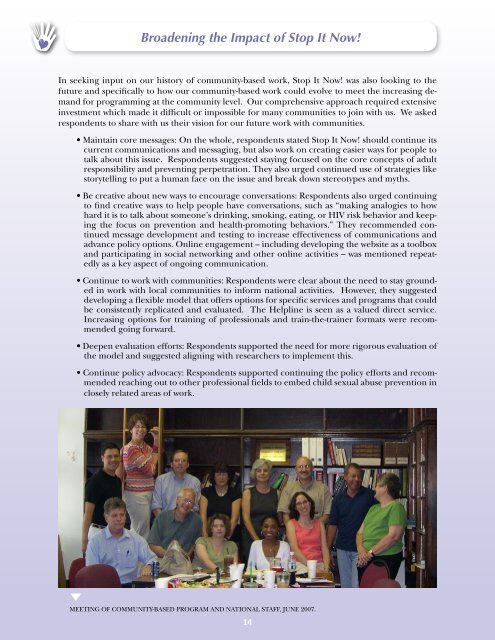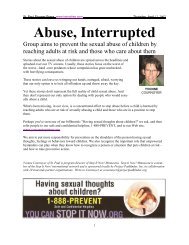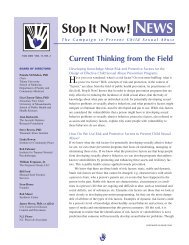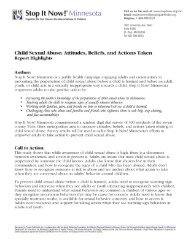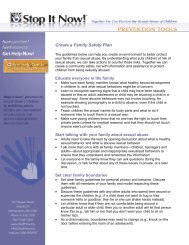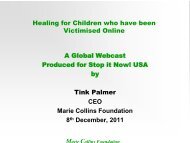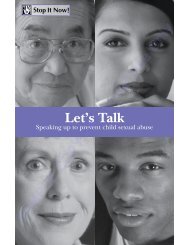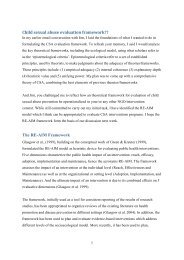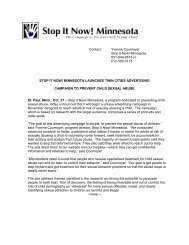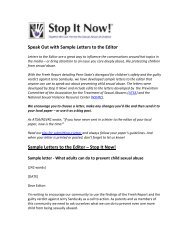Lessons Learned from Stop It Now! Community-Based Programs
Lessons Learned from Stop It Now! Community-Based Programs
Lessons Learned from Stop It Now! Community-Based Programs
You also want an ePaper? Increase the reach of your titles
YUMPU automatically turns print PDFs into web optimized ePapers that Google loves.
Broadening the Impact of <strong>Stop</strong> <strong>It</strong> <strong>Now</strong>!<br />
In seeking input on our history of community-based work, <strong>Stop</strong> <strong>It</strong> <strong>Now</strong>! was also looking to the<br />
future and specifically to how our community-based work could evolve to meet the increasing demand<br />
for programming at the community level. Our comprehensive approach required extensive<br />
investment which made it difficult or impossible for many communities to join with us. We asked<br />
respondents to share with us their vision for our future work with communities.<br />
• Maintain core messages: On the whole, respondents stated <strong>Stop</strong> <strong>It</strong> <strong>Now</strong>! should continue its<br />
current communications and messaging, but also work on creating easier ways for people to<br />
talk about this issue. Respondents suggested staying focused on the core concepts of adult<br />
responsibility and preventing perpetration. They also urged continued use of strategies like<br />
storytelling to put a human face on the issue and break down stereotypes and myths.<br />
• Be creative about new ways to encourage conversations: Respondents also urged continuing<br />
to find creative ways to help people have conversations, such as “making analogies to how<br />
hard it is to talk about someone’s drinking, smoking, eating, or HIV risk behavior and keeping<br />
the focus on prevention and health-promoting behaviors.” They recommended continued<br />
message development and testing to increase effectiveness of communications and<br />
advance policy options. Online engagement – including developing the website as a toolbox<br />
and participating in social networking and other online activities – was mentioned repeatedly<br />
as a key aspect of ongoing communication.<br />
• Continue to work with communities: Respondents were clear about the need to stay grounded<br />
in work with local communities to inform national activities. However, they suggested<br />
developing a flexible model that offers options for specific services and programs that could<br />
be consistently replicated and evaluated. The Helpline is seen as a valued direct service.<br />
Increasing options for training of professionals and train-the-trainer formats were recommended<br />
going forward.<br />
• Deepen evaluation efforts: Respondents supported the need for more rigorous evaluation of<br />
the model and suggested aligning with researchers to implement this.<br />
• Continue policy advocacy: Respondents supported continuing the policy efforts and recommended<br />
reaching out to other professional fields to embed child sexual abuse prevention in<br />
closely related areas of work.<br />
Meeting of community-based program and national staff, June 2007.<br />
14


